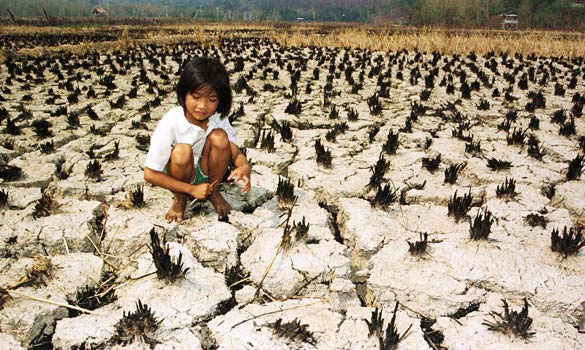El Niño in the Philippines: 8 Things You Should Know
Jan 27, 2016 • Abu Poblete

Jan 27, 2016 • Abu Poblete
 El Niño in the Philippines: 8 Things You Should Know
El Niño in the Philippines: 8 Things You Should Knowby Abu Poblete
2015 was the hottest year ever recorded according to the World Meteorological Organization (WMO). This explains all those hot commutes and sweaty commuters you had to suffer through on your way to and from work. But the long-time effects of the increasing temperature are way worse than the daily heat. Places outside Metro Manila, especially areas with sprawling farmlands and water reservoirs are getting the worst of it because of the El Niño. Power plants have started rationing, farmers are losing assets, and some cities’ export percentage are slowly and continually declining. And the El Nino will continue on until the end of the first quarter of 2016.
The haze in Indonesia that reached the Philippines, the crazy blizzard in the US and the alarming temperature drop in Thailand and Taiwan—all of these are messages from the Earth telling us to just look up and figure out that all of these people dying and suffering are because of human activity.
The Philippines might be next, and here are 8 signs why. So unless you’re Donald Trump who believes that global warming and climate change is a hoax, don’t read on because you’re just going to get pissed.
The CDRRMC sought the need of the declaration because of the affected 587 hectares of farmland and the P10.8 million damage to the city’s agriculture.
Cloud seeding is the solution the government sees to mitigate the effect of the El Niño, but an initial P4 million is required for this to take effect.
The drought pushed the water level down and caused their local water utility to ration their water for 12 hours.
The fast declining water elevation of Lake Lanao pushed the NPC to go into a conservation mode by reducing the outflow and discharge of water from the lake which will consequently reduce the total generation of the Agus hydropower electric plant complex, NPC President and CEO Ma. Gladys Cruz Sta. Rita said.
Also because of the El Niño, Lanao Del Sur suffered from grass fires in Mt. Piagayungan. Luckily, the fire didn’t bring any harm to the community’s residents.
El Niño won’t be leaving the country soon, and the Department of Trade and Industry (DTI) has identified it as a major challenge for the region. This is why the local government is said to allot P60 million from the their calamity fund for the mitigation of the effects of El Niño to Davao.
We hope to see irrigation facilities, cloud seeding, repair of dams and other rehabilitation projects in the near future.
Even the great Banaue Rice Terraces has reached its limits for years now, and the El Niño isn’t really helping. The Rice Terraces’ listing as a UNESCO Heritage site is already being threatened by a seven-story parking building planned to be constructed right beside it, a lack of farmers, and giant worms attacking the crops. El Niño drought won’t be helping the site’s survival.
From the P3 trillion budget this year, President Noynoy Aquino has allotted a total of P19 billion to address the effects of the El Niño to the country. Socioeconomic Planning Secretary Arsenio M. Balisacan said that many provinces will be threatened by the drought even more when El Niño reaches its peak around March, April and May, He said that they are already programming themselves to expect the worst to happen for a much faster and detailed response.
How is the El Niño affecting your area? Share your story with us in the comments below!
Abu is a fangirl by day, and a sleeping fangirl by night. She is mostly seen on Twitter which she considers her first home even though she loathes with all her being its cancel culture (We can all grow and learn guys!). She ranks as the Philippines' number one Modern Family fan in QuizUp. She's a cool girl (she also wrote this write-up).
Input your search keywords and press Enter.
